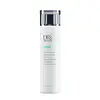What's inside
What's inside
 Key Ingredients
Key Ingredients

 Benefits
Benefits

 Concerns
Concerns

 Ingredients Side-by-side
Ingredients Side-by-side

Water
Skin Conditioning1,2-Hexanediol
Skin ConditioningMethylpropanediol
SolventGlycereth-26
HumectantAloe Barbadensis Leaf Extract
EmollientEctoin
Skin ConditioningAloe Barbadensis Leaf Juice
Skin ConditioningAllantoin
Skin ConditioningMelissa Officinalis Leaf Extract
Skin ConditioningCentella Asiatica Extract
CleansingDioscorea Japonica Root Extract
Skin ConditioningLaminaria Japonica Extract
Skin ProtectingPropanediol
SolventSuccinoglycan
Skin ConditioningPolyglyceryl-10 Laurate
Skin ConditioningPentylene Glycol
Skin ConditioningXylitol
HumectantGlycerin
HumectantDisodium EDTA
Ethylhexylglycerin
Skin ConditioningSodium Benzoate
MaskingCitric Acid
BufferingParfum
MaskingWater, 1,2-Hexanediol, Methylpropanediol, Glycereth-26, Aloe Barbadensis Leaf Extract, Ectoin, Aloe Barbadensis Leaf Juice, Allantoin, Melissa Officinalis Leaf Extract, Centella Asiatica Extract, Dioscorea Japonica Root Extract, Laminaria Japonica Extract, Propanediol, Succinoglycan, Polyglyceryl-10 Laurate, Pentylene Glycol, Xylitol, Glycerin, Disodium EDTA, Ethylhexylglycerin, Sodium Benzoate, Citric Acid, Parfum
Water
Skin ConditioningButylene Glycol
HumectantGlycerin
HumectantSorbitol
HumectantSodium Lactate
BufferingSodium PCA
HumectantXanthan Gum
EmulsifyingPanthenol
Skin ConditioningAloe Barbadensis Leaf Juice
Skin ConditioningEthylhexylglycerin
Skin ConditioningSodium Hyaluronate
HumectantSodium Carboxymethyl Beta-Glucan
CleansingSodium Polyglutamate
HumectantAesculus Hippocastanum Seed Extract
Skin ConditioningChamomilla Recutita Flower Extract
MaskingCucumis Sativus Fruit Extract
EmollientGlycyrrhiza Glabra Root Extract
BleachingPhenoxyethanol
PreservativeChlorphenesin
AntimicrobialBenzoic Acid
MaskingPotassium Sorbate
PreservativeSodium Benzoate
MaskingWater, Butylene Glycol, Glycerin, Sorbitol, Sodium Lactate, Sodium PCA, Xanthan Gum, Panthenol, Aloe Barbadensis Leaf Juice, Ethylhexylglycerin, Sodium Hyaluronate, Sodium Carboxymethyl Beta-Glucan, Sodium Polyglutamate, Aesculus Hippocastanum Seed Extract, Chamomilla Recutita Flower Extract, Cucumis Sativus Fruit Extract, Glycyrrhiza Glabra Root Extract, Phenoxyethanol, Chlorphenesin, Benzoic Acid, Potassium Sorbate, Sodium Benzoate
Ingredients Explained
These ingredients are found in both products.
Ingredients higher up in an ingredient list are typically present in a larger amount.
Aloe Barbadensis Leaf Juice comes from leaves of the aloe plant. Aloe Barbadensis Leaf Juice is best known for helping to soothe sunburns. It is also anti-inflammatory, moisturizing, antiseptic, and can help heal wounds.
Aloe is packed with good stuff including Vitamins A, C, and E. These vitamins are antioxidants, which help fight free-radicals and the damage they may cause. Free-radicals are molecules that may damage your skin cells, such as pollution.
Aloe Barbadensis Leaf Juice also contains sugars. These sugars come in the form of monosaccharides and polysaccharides, folic acid, and choline. These sugars are able to help bind moisture to skin.
It also contains minerals such as calcium, 12 anthraquinones, fatty acids, amino acids, and Vitamin B12.
Learn more about Aloe Barbadensis Leaf JuiceEthylhexylglycerin (we can't pronounce this either) is commonly used as a preservative and skin softener. It is derived from glyceryl.
You might see Ethylhexylglycerin often paired with other preservatives such as phenoxyethanol. Ethylhexylglycerin has been found to increase the effectiveness of these other preservatives.
Glycerin is already naturally found in your skin. It helps moisturize and protect your skin.
A study from 2016 found glycerin to be more effective as a humectant than AHAs and hyaluronic acid.
As a humectant, it helps the skin stay hydrated by pulling moisture to your skin. The low molecular weight of glycerin allows it to pull moisture into the deeper layers of your skin.
Hydrated skin improves your skin barrier; Your skin barrier helps protect against irritants and bacteria.
Glycerin has also been found to have antimicrobial and antiviral properties. Due to these properties, glycerin is often used in wound and burn treatments.
In cosmetics, glycerin is usually derived from plants such as soybean or palm. However, it can also be sourced from animals, such as tallow or animal fat.
This ingredient is organic, colorless, odorless, and non-toxic.
Glycerin is the name for this ingredient in American English. British English uses Glycerol/Glycerine.
Learn more about GlycerinSodium Benzoate is a preservative. It's used in both cosmetic and food products to inhibit the growth of mold and bacteria. It is typically produced synthetically.
Both the US FDA and EU Health Committee have approved the use of sodium benzoate. In the US, levels of 0.1% (of the total product) are allowed.
Sodium benzoate works as a preservative by inhibiting the growth of bacteria inside of cells. It prevents the cell from fermenting a type of sugar using an enzyme called phosphofructokinase.
It is the salt of benzoic acid. Foods containing sodium benzoate include soda, salad dressings, condiments, fruit juices, wines, and snack foods.
Studies for using ascorbic acid and sodium benzoate in cosmetics are lacking, especially in skincare routines with multiple steps.
We always recommend speaking with a professional, such as a dermatologist, if you have any concerns.
Learn more about Sodium BenzoateWater. It's the most common cosmetic ingredient of all. You'll usually see it at the top of ingredient lists, meaning that it makes up the largest part of the product.
So why is it so popular? Water most often acts as a solvent - this means that it helps dissolve other ingredients into the formulation.
You'll also recognize water as that liquid we all need to stay alive. If you see this, drink a glass of water. Stay hydrated!
Learn more about Water